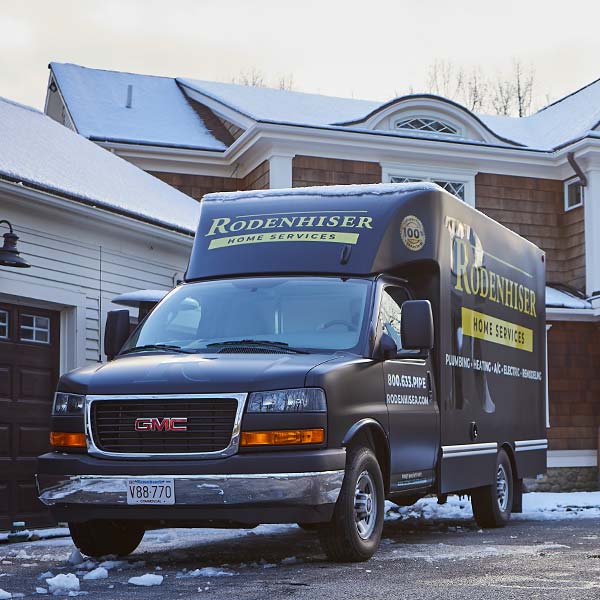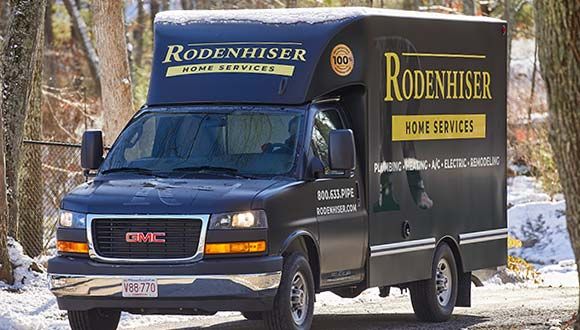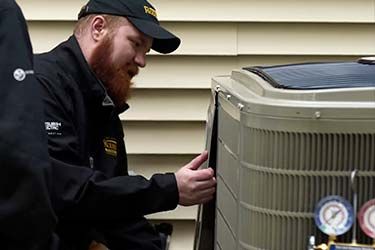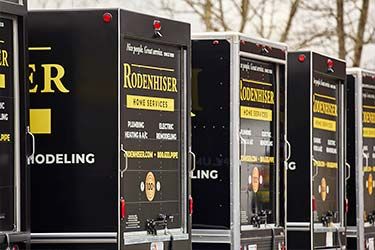



If you have ceiling fans in your home, you have undoubtedly come to appreciate how air movement can help keep you cooler in the summer. Coupled with an efficient air conditioner, ceiling fans work wonders to keep you comfortable while lowering your summertime electricity bills.

Have you considered the possibility that ceiling fans can be useful in the winter as well? It’s true! The quick flip of the switch, generally located on the motor's housing, reverses the direction of the fan blades, which makes all the difference in cooler weather.
With ceiling fan blades spinning clockwise instead of the standard counterclockwise direction, they create an updraft that disturbs the warm air settled near the ceiling. In this way, the fan sends warm air back down into the living space, helping to enhance heating and creating even room temperatures.
When using a ceiling fan to help cut heating costs in the winter, make sure you set the fan to run on its lowest setting, which ensures that the updraft doesn’t end up creating a cooling, breezy effect as it sends warmer air back down. Fans also consume the least amount of energy possible on the lowest setting. However, since ceiling fans only generally consume about the same amount of electricity needed to power a 100-watt light bulb, you could run your ceiling fan 24/7 at the cost of mere pennies per day.
You can save even more when you run ceiling fans by choosing Energy Star-qualified models. Any equipment with the Energy Star label is designed to provide you with the best performance at the lowest operational cost possible.
Keep in mind that ceiling fans are most effective in the winter when they are installed on vaulted ceilings or at the top of open stairwells. In these areas, fans will push warm air down toward the common living spaces.
To learn more about enhancing heating in your home this winter with ceiling fans, or for advice on other heating and cooling topics, please contact Rodenhiser Plumbing, Heating & Air Conditioning. We serve the Route 495/128 area of Medway MA.





Both Alex and Patrick were knowledgeable, courteous, and professional. They made a change that might have solved the recent problem and have structured a more complete solution. We agreed to this...
Mike was thorough, thoughtful and considerate. Covered their shoes before entering, surveyed my issue and provided an explanation of the services and costs. Great Job!
Alex did a great job providing an explanation of the services provided and went out of his way to offer assistance/advice on other issues outside of our scheduled maintenance visit.
Brian did an excellent job inspecting our 18-year old boiler and replacing some of the accessory hardware that needed it, he also adjusted the outgoing hot water settings for our radiators and...
Rodenhiser is my one stop shop!!! They take care of my HVAC, electrical, and plumbing issues & are always helpful addressing any questions I may have about the systems in my house! Everyone...
Chris G. and Nick V. showed up bright and early at 8am to fix my water heater issue. They were on time, polite and were able to fix an issue that has been plaguing my house for a good year. They...
When you are looking for plumbing, electrical, heating or air conditioning in the Route 495 / 128 area, you will be delighted that you called Medway MA' trusted choice since 1928.
With a total dedication to professional workmanship and excellent service, discover why families and businesses continue to trust Rodenhiser after generations of service







